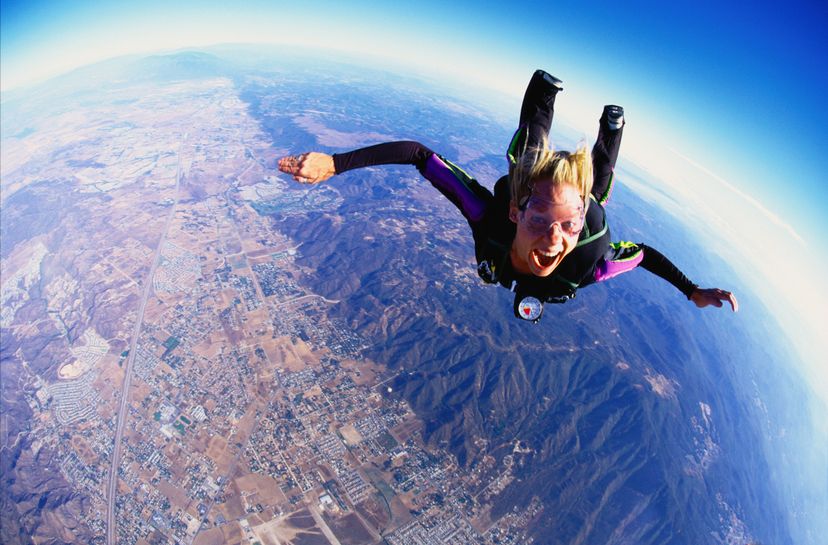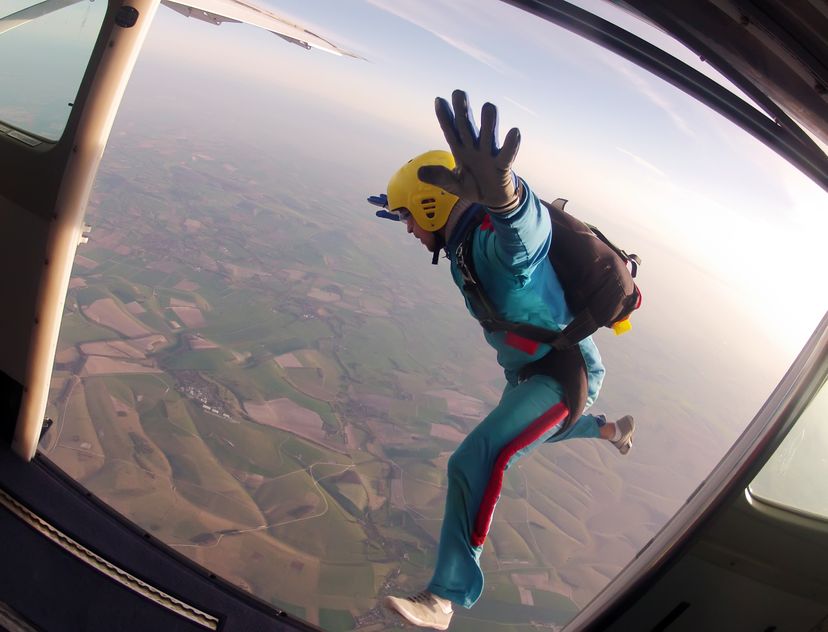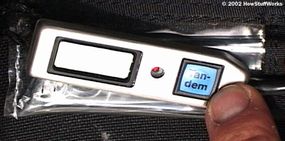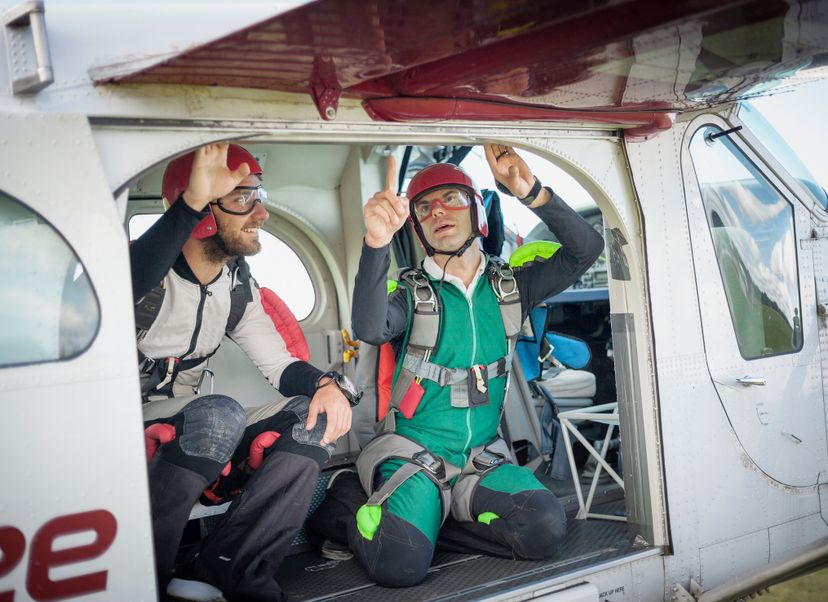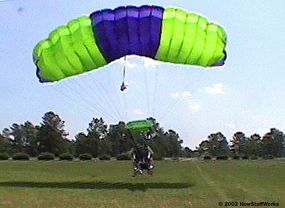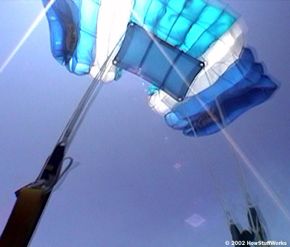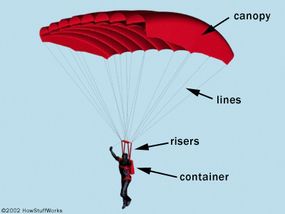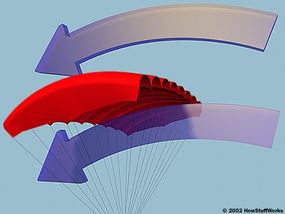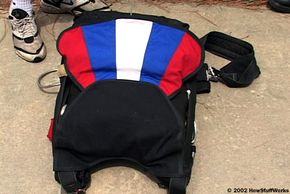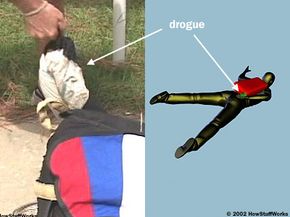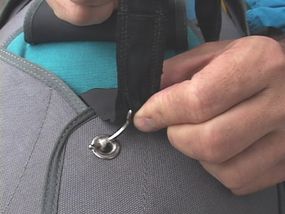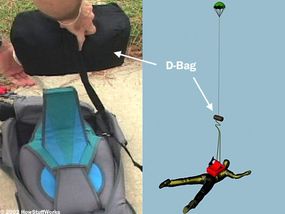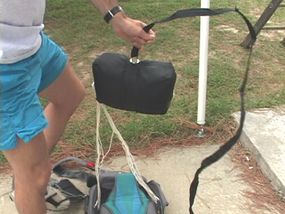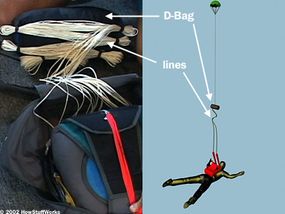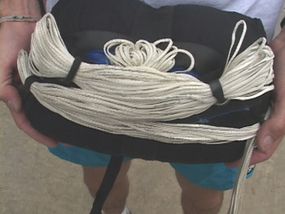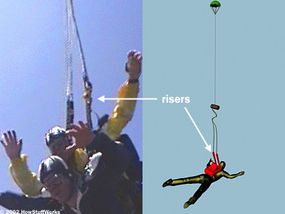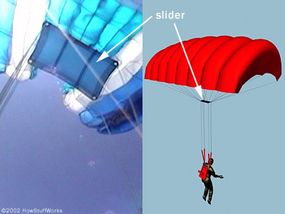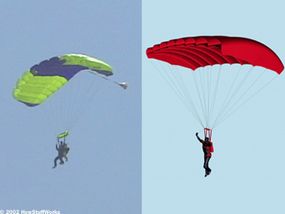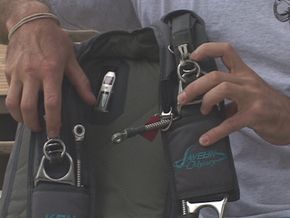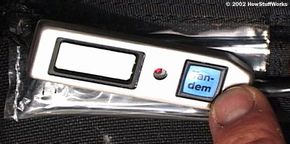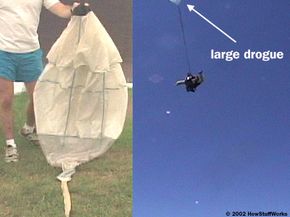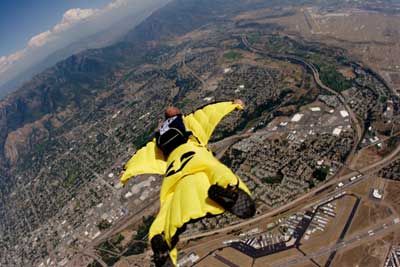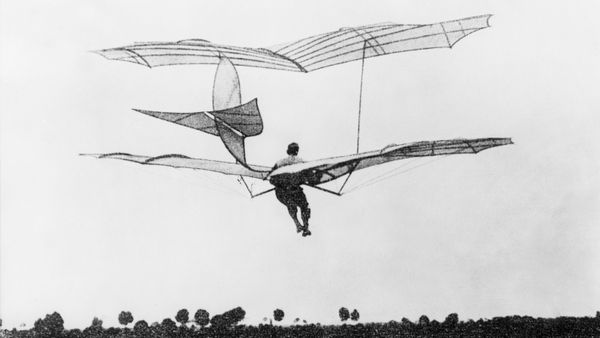There's not a lot of room for error in skydiving. Let's say that one of the following three things happens during a skydive:
- You lose consciousness as you are exiting the plane or falling.
- You lose track of your altitude because you get distracted.
- Something completely unexpected happens -- maybe an airplane or a second skydiver flies too close to you and either damages your equipment or makes you unstable.
In any of these situations, you may be unable to deploy your parachute yourself, and you need some help. An AAD (automatic activation device) is a small computer that constantly monitors the altitude and activates the reserve chute for you.
One of the best-known AADs is the CYPRES AAD. CYPRES is short for "Cybernetic Parachute Release System." According to the manufacturer, there are more than 65,000 CYPRES units in the field.
The CYPRES unit has four parts:
- A small display that lets your turn it on and monitor its activity
- The computer itself
- The battery
- The cutter, which actually deploys the reserve chute
The cutter is fascinating. It is essentially a bullet, and the computer sends it a signal when it is time to deploy the reserve chute. The cutter fires. The tip of the cutter is wedge-shaped, like a knife, and it cuts a piece of cord called the closing loop. The closing pin for the reserve chute hooks through the closing loop to hold the reserve chute in the container. Cutting the closing loop is the surest way possible to deploy the reserve.
The computer has the non-trivial job of deciding when it is time to deploy the reserve. The basic goal is to always deploy the reserve chute if the skydiver is in free fall and makes it down to 750 feet (230 meters) in altitude. However, this is not as easy as it sounds. Here are some of the situations that the computer has to handle to avoid erroneous deployments:
- Normal flying under a successfully deployed main cute
- Quick, unexpected pressure changes caused by rolling over (front to back) or flying around other skydivers in free fall
- Return to the ground in the airplane (rather than jumping)
- Significant pressure changes caused by the weather (e.g., a low-pressure system moving into the area)
Only if the skydiver is in free fall at 750 feet will the CYPRES unit cut the reserve loop.
The skydiver turns on the CYPRES on the ground. The CYPRES computer takes a measurement of air pressure on the ground and uses this to determine the skydiver's altitude throughout the day. Whenever the skydiver is on the ground, the unit recalibrates every 30 seconds to handle weather-based changes in atmospheric pressure.
